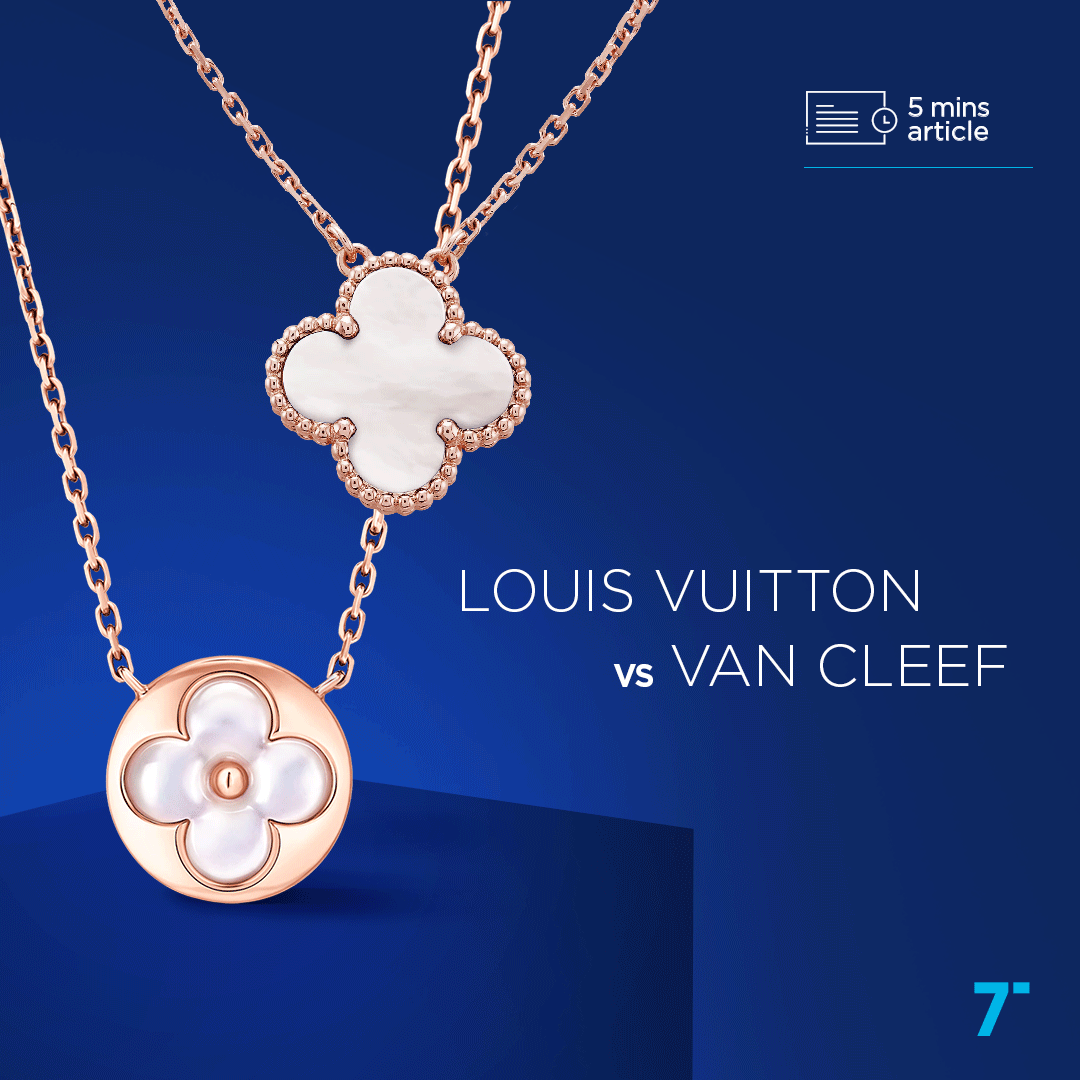Van Cleef & Arpels’ “Alhambra” collection, distinguished by its four-leaf clover design, has been an iconic yet polemical mark in the contemporary luxury jewelry world. The inspiration behind this collection is attributed to Jacques Arpels, who was inspired by the Moorish architecture of the Alhambra Palace in Granada, Spain, as well as his four-leaf clovers collection, believing in their lucky significance.
For over five decades, the Alhambra collection has undergone extensive development, evolving into a cornerstone of Van Cleef & Arpels’ aesthetic and economic identity.
Characterized by its use of semi-precious stones and precious metals, the design has become emblematic of Van Cleef & Arpels’ timeless elegance and refined craftsmanship.
In 2015, Louis Vuitton launched the Blossom collection, which initially sparked concerns from Van Cleef & Arpels.
While concerns were raised regarding the resemblance between the two collections, it is important to note that Louis Vuitton has long explored floral themes through its collections. Most notably, through its iconic monogram flower introduced in 1896, the blossom motif is deeply embedded in the brand’s visual identity. The blossom aesthetic was further accentuated in the early 2000s through a collaboration with celebrated contemporary artist Takashi Murakami, who reimagined the motif in vibrant, pop-art forms across Louis Vuitton accessories and leather goods.
Despite Louis Vuitton’s longstanding engagement with the Blossom theme, the plaintiffs, Cartier and Richemont International, argued that Louis Vuitton’s Blossom line mirrored several distinguishing elements of the Alhambra collection, including the four-leaf clover design, the specific materials used, and the pricing strategy, thus constituting an act of free riding. Their claims centered on several points of resemblance:
- Four-lobed shape: Use of a rounded, four-lobed motif framed in precious metal.
- Materials: Deployment of semi-precious stones similar to those used in the Alhambra collection.
- Color palettes and size variations: Overlapping tones and comparable scaling across pieces.
- Pricing strategy: Placement of the Blossom collection within the same high-end luxury pricing tier.
In defense, Louis Vuitton argued that it had registered a trademark for the four-lobed flower design in 1996 (trademark No. 96 612 504) for use in jewelry and other categories, asserting that their historical monogram design was distinct.
In 2017, the Paris Commercial Court ruled in favor of Richemont (parent company of Van Cleef & Arpels), finding Louis Vuitton liable for free riding due to similarities between its Color Blossom collection and Van Cleef’s Alhambra collection. The court ordered Louis Vuitton to pay over €200,000 in damages, cease production/sale of the contested jewelry, and cover €120,000 in legal costs.
In response, Louis Vuitton appealed the decision, seeking the dismissal of the free riding claim, while Cartier and Richemont International cross-appealed, requesting additional damages.
On June 23, 2023, the Paris Court of Appeal reversed the initial ruling against Louis Vuitton, emphasizing the importance of freedom of trade and fair competition. While the Court acknowledged the registration, it emphasized that the fair use of designs in the marketplace must comply with broader trade practices rather than solely relying on the protection of registered marks. Additionally, the Court noted that the use of a four-leaf shape was widespread in the jewelry industry, referencing designs by other high-end brands such as Chopard, Buccelati, and Morgane Bello. The Court deemed the four-lobed shape too common in the jewelry industry to warrant exclusivity, concluding that Louis Vuitton did not constitute unlawful appropriation.
In light of these considerations, the Court concluded that the plaintiffs had failed to demonstrate wrongful conduct on the part of Louis Vuitton. As a result, the Court reversed the first-instance decision and ordered Cartier and Richemont International to pay €50,000 in legal costs to Louis Vuitton.
As of March 2025, the Paris court of Appeal’s ruling has been upheld by France’s Court of Cassation, leaving ongoing questions about the boundaries of intellectual property protection in the luxury sector to be further clarified.
By rejecting Richemont’s free-riding claims and emphasizing Louis Vuitton’s use of its historic monogram patterns, the decision underscores that common design motifs (e.g., four-lobed shapes) cannot monopolize market segments without distinctive, protectable elements. This reaffirms the judicial balancing act between IP rights and fair competition, requiring brands to demonstrate intentional exploitation of reputation rather than incidental similarities.
In the world of luxury jewelry, the line between inspiration and imitation can be as delicate as a diamond’s edge.
While not legally revolutionary, the judgment serves as a practical benchmark for navigating design protection in an industry driven by aesthetic heritage.






